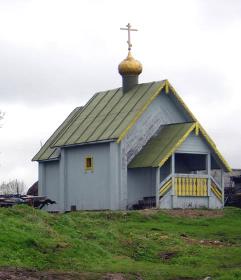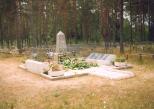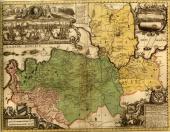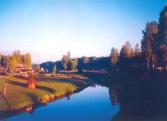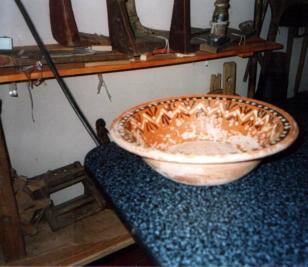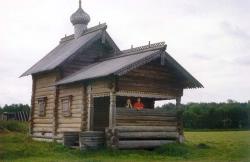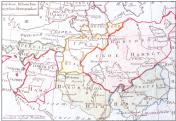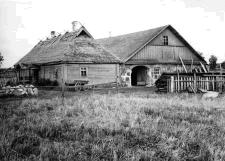Articles
/
Russians
Russians
Subject /
Ethnic culture/Ethnic communities
Subject /
Ethnic culture//
Russians are an ethnic community, the main population of the Russian Federation. Among Russians there are some ethnic groups and ethnographic groups can be marked (e.g. Cossacks and Pomors (coast-dwellers (inhabitants of White Sea and Barents Sea coast). The Russian language belongs to the East Slavonic subgroup of the Slavonic group of the Indo-European language family. According to the census in 2002 in Russian Federation there were 115,9 million Russians (79,8% of the total number of population). In the Leningrad Oblast Russians are the most numerous nation - 1,5 million people (89,6% of the population of the oblast). The religious Russians are mostly members of the Orthodox Church, there are followers of the Old Belief. In the two last decades different trends of Protestantism and sectarianism spread among a part of the Russian population. In the Leningrad Oblast some groups of Russians having some peculiarities in culture, everyday life and beliefs were formed. The ancestors of Russians are east Slavs. They appeared on the territory of the Leningrad Oblast in the middle of the 1st millenium AD. In course of time they assimilated or supplanted the Baltic-Finnic population (the ancestors of Sami, Karelians, Veps, Izhora, Votes) out their former territories. Towards the beginning of the 2nd millenium the main regions of settlement of the East Slavic population were the territories of the Izhora Plateau, Verkhneye Poluzh'ye and Povolkhovye. Here on the basis of Novgorod Slavs and Krivichi a group of Old Russian population, later kept aloof as a regional group of the Novgorodians, was formed. It was a component of the Russian ethnic group in the end of the the 15th - 16th centuries. The most considerable influx of Russian population from other regions of Russia onto the territory located in the environs of S.Petersburg took place in the first half of the 18th century and also in the second half of the 20th century. The economy of Russians who lived on the territory of the present Leningrad Oblast at the turn of the 19th - 20th centuries was based on the combination of some sectors. The most important sectors were farming and animal husbandry. Those who lived near Lake Ladoga and Lake Onega, on the Gulf of Finland were occupied with fishing. In the east where there were lots of forests people were occupied with hunting, gathering and logging. The most widespread trades were pottery making which was concentrated in the settlements on the Oyat River and Yavosma River, Kirishi (Zakhozhye (Zakhonye locality)) trade for making lace on bobbins (see Zakhozhye Lace). Home handicrafts (weaving, embroidery, making products from wood, plaiting) provided internal needs of peasants' farms. Russians' villages were formed originally under the influence of environmental and geographical factors: they were mostly located along the sides of reservoirs with taking into account the landscape. In the 18th - the beginning of the 20th centuries the settlements little by little were having a regular planning. A traditional farmstead consisted of a log hut (izba) (with a different outhouses) of North and Central Russian type of West Russian type, in the west of the oblast brick houses were found. The main traditional women's clothes were a saraphan set. In the beginning of the 20th century some urban items arose: e.x. a women's jacket, a skirt. Men's clothes consisted of a Russian shirt (with collar fastening on one side), a belt and trousers. Bast shoes from birch bark, leather boots, valenki (felt boots) were used as footwear. Russians' food ration was founded on cereals and farinaceous foods in combination with milk, meat and fish dishes, mushrooms and berries. The most widespread drinks were kvass and beer. The base of social organization was a village community consisting of the households of one or some settlements. Among the native Russian people the belief in evil cuse, witchcraft, the brownie and the spirits-masters of woods have been kept so far.
Authors
Yegorov, Sergey Borisovich
Geography
Topographical landmarks/Gulf of Finland, the
Topographical landmarks/Izhora Plateau, the
Topographical landmarks/Karelian Isthmus, the
Topographical landmarks/Ladoga Lake
Topographical landmarks/Onega Lake
Topographical landmarks/Oyat River, the
Topographical landmarks/Povolkhovye
Topographical landmarks/Prinevye
Topographical landmarks/Verkhneye Poluzh'ye
Topographical landmarks/Yavosma River, the
Bibliography
Гадло А.В., Егоров С.Б., Верняев И.И., Чистяков А.Ю. Этнография Северо-Запада России. Южные окрестности Петербурга – Приладожье – центральные районы Псковщины. СПб., 2004.
Егоров С.Б. Озеряне – этнолокальная группа русских (исследования 2002 г. в Бокситогорском районе Ленинградской области) // Этнографическое изучение Северо-Запада России: Итоги полевых исследований 2002 г. в Ленинградской, Псковской и Новгородской областях. Материалы VII Региональной научной конференции молодых ученых. СПб., 2002., С.7-14
Русские. М., 1999, С.7-14
Егоров С.Б. Локальные группы населения востока Ленинградской области // Университетские Петербургские Чтения. СПб., 2003., С. 477-483
Subject Index
Izhora (Izhora men)
Karelians
Oyatskaya ceramics
Veps
Vod (Votes)
Zakhozhskoye lace
Mentioned in articles:
|
hidden
|
Boksitogorsk District
BOKSITOGORSK DISTRICT, a part of Leningrad Oblast. Population: 34,800. Area: 7163 sq. km. Adm. center: Boksitogorsk Town. The district comprises Yefimovsky urban settlement and 275 inhabited localities. It borders Tikhvin District of Leningrad... more
|
|
|
|
hidden
|
Ethnic deportations
Ethnic deportations are forced resettlement carried out according to an ethnic signs. In 1935-36 in the Leningrad Oblast there were some activities on purging the zone of land with 22 kilometres wide at the border with Finland "from kulak and... more
|
|
|
|
hidden
|
Ethnic groups if the Leningrad Oblast
Ethnic communities of the Leningrad Oblast. The settled communities of people historically formed on the certain territory, having the common features of culture and self-consciousness expressed in the native name are called an ethnic community (or... more
|
|
|
|
hidden
|
Ingermanlandia
INGERMANLANDIA (Swed. Ingermanland, Rus. Izhora Land or Ingria), historic and cultural region in the western part of the Leningrad Oblast (Kingisepp, Volosovo, Lomonosov, Vsevolozhsk, Gatchina, Tosno, western part of Kirovsk Districts.) The western... more
|
|
|
|
hidden
|
Kurba, settlement
KURBA, a settlement in Podporozhye District. Population: 368. Located in the upper reaches of the Oyat River. The name originates from the Kurba River, a left-hand tributary of the Oyat. It was founded in 1959 as a settlement for timber harvesters.... more
|
|
|
|
hidden
|
Oyatskaya ceramics
OYAT POTTERY. Pottery existed in Russian and Veps villages on the Oyat River (modern Lodeynoye Pole District) from time immemorial. It was due to deposits of high quality red clay. Pottery was especially developed in the XVIII c. Oyat potters... more
|
|
|
|
hidden
|
Podporozhye District
PODPOROZHYE DISTRICT, municipal entity. Population: 35,200. Area: 7705.5 sq. km. Located in the north-east of Leningrad Oblast. In the north-west and north, it borders Olonets, Pryazha, and Prionezhsky Districts of the Republic of Karelia; in the... more
|
|
|
|
hidden
|
Traditional business and handicraft
TRADITIONAL TRADES AND HANDICRAFTS originated from household occupations and crafts which were aimed at production of household objects for the peasants' own needs. Originality of traditional trades in Leningrad Oblast is connected... more
|
|
|
|
hidden
|
v. Sankt-Peterburg Gubernia, the
ST. PETERSBURG GUBERNIA, historic adm. and territorial unit of Russia. Established in 1708 by the decree of Peter I subdividing Russia into eight gubernias. It included the areas of the current Leningrad, Novgorod, Pskov, and Tver Oblasts, and... more
|
|
|
|
hidden
|
|
hidden
|
|
hidden
|
|
hidden
|
|
hidden
|
|
hidden
|
|
hidden
|
|
hidden
|
|
hidden
|
|
hidden
|
|
hidden
|
|
hidden
|
|
hidden
|
|
hidden
|
|
hidden
|
|
hidden
|
|
hidden
|
|
hidden
|
|
hidden
|
|



